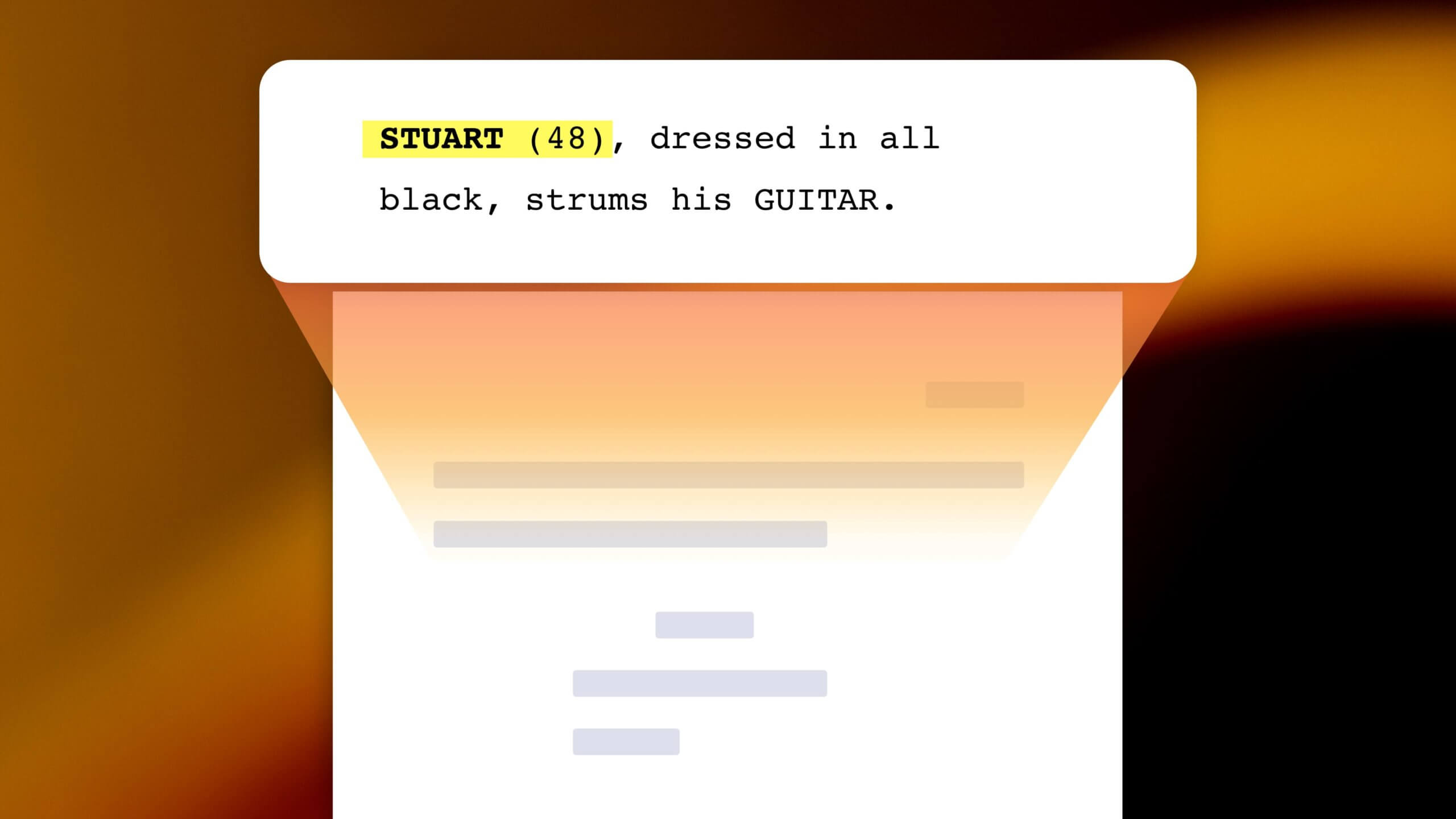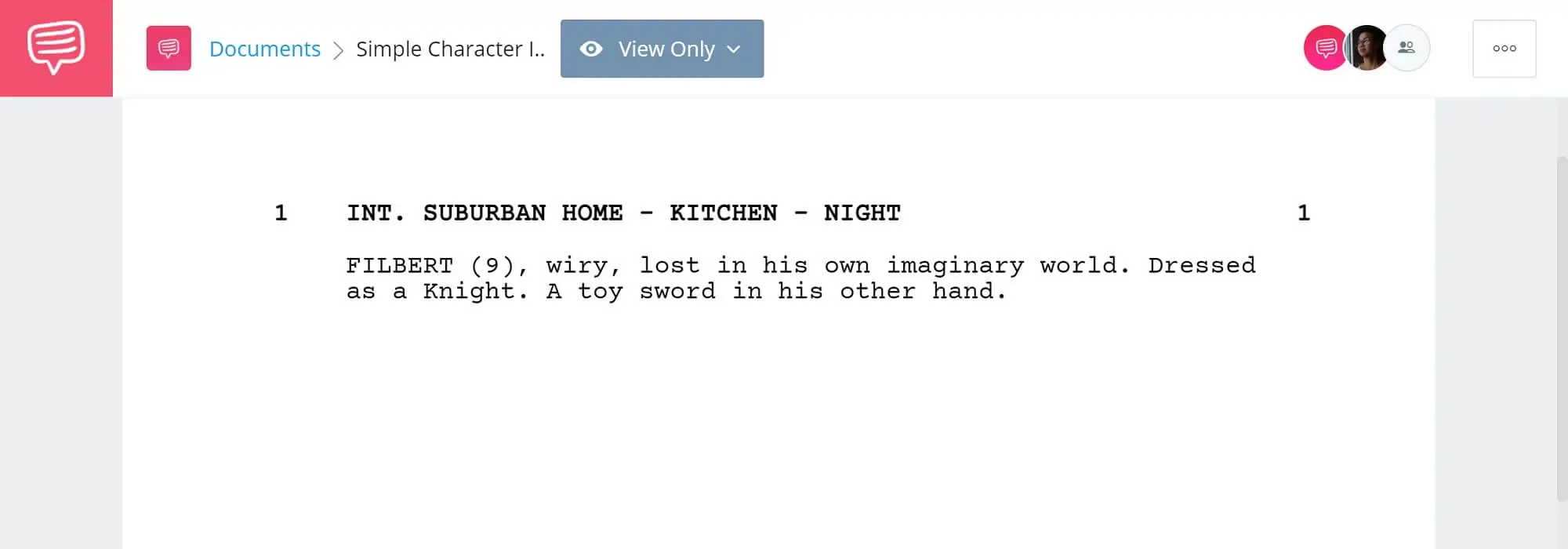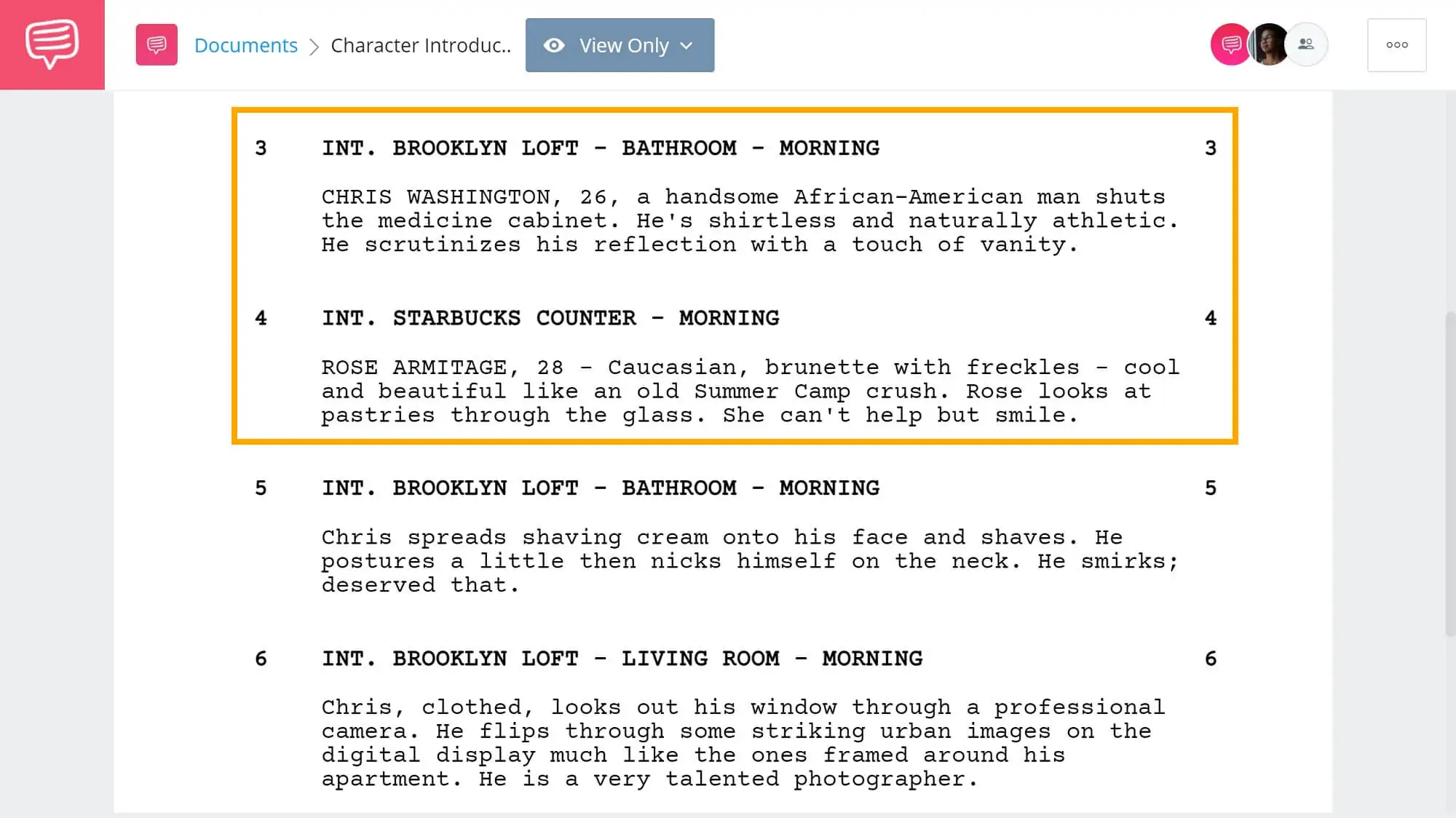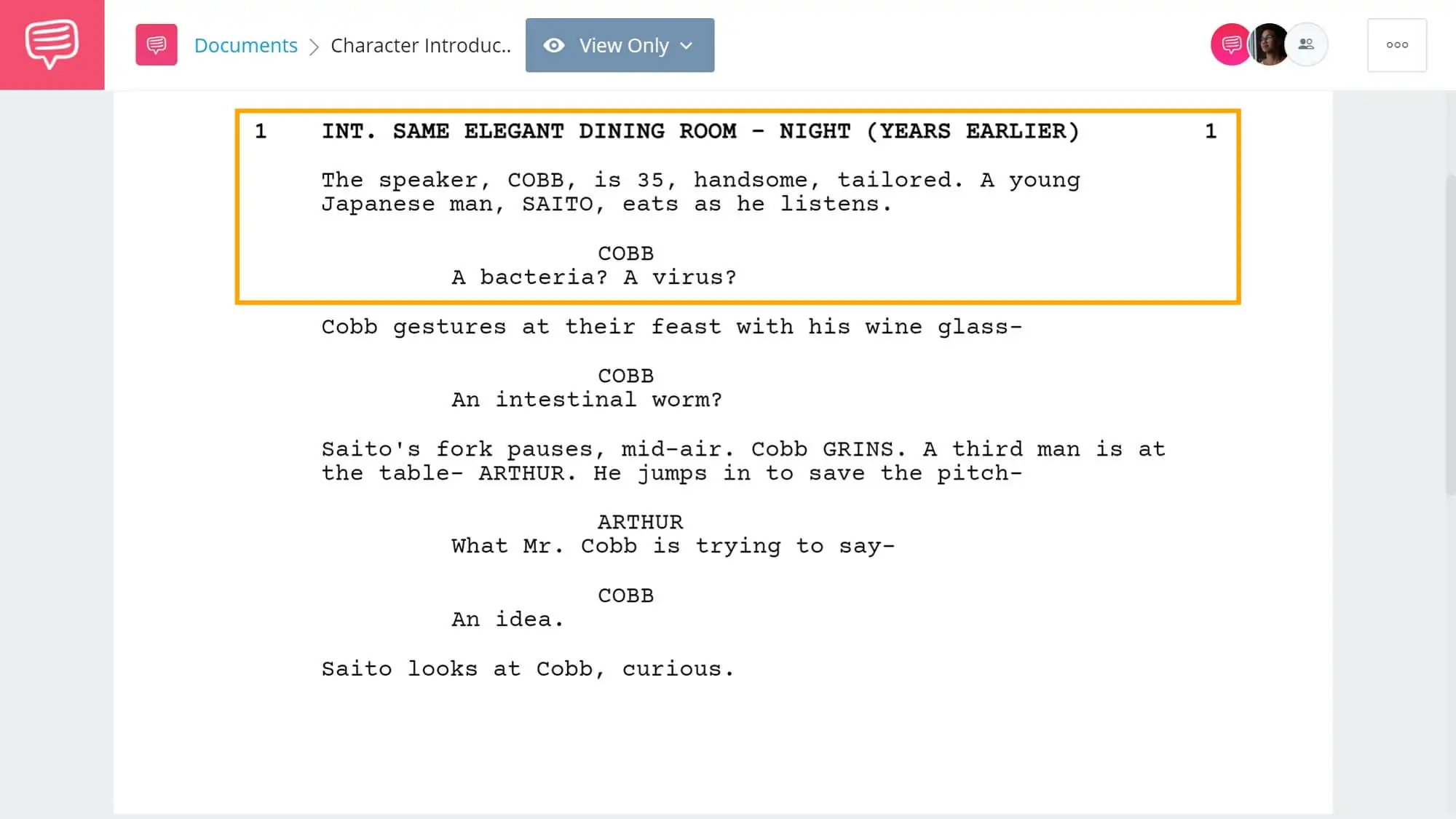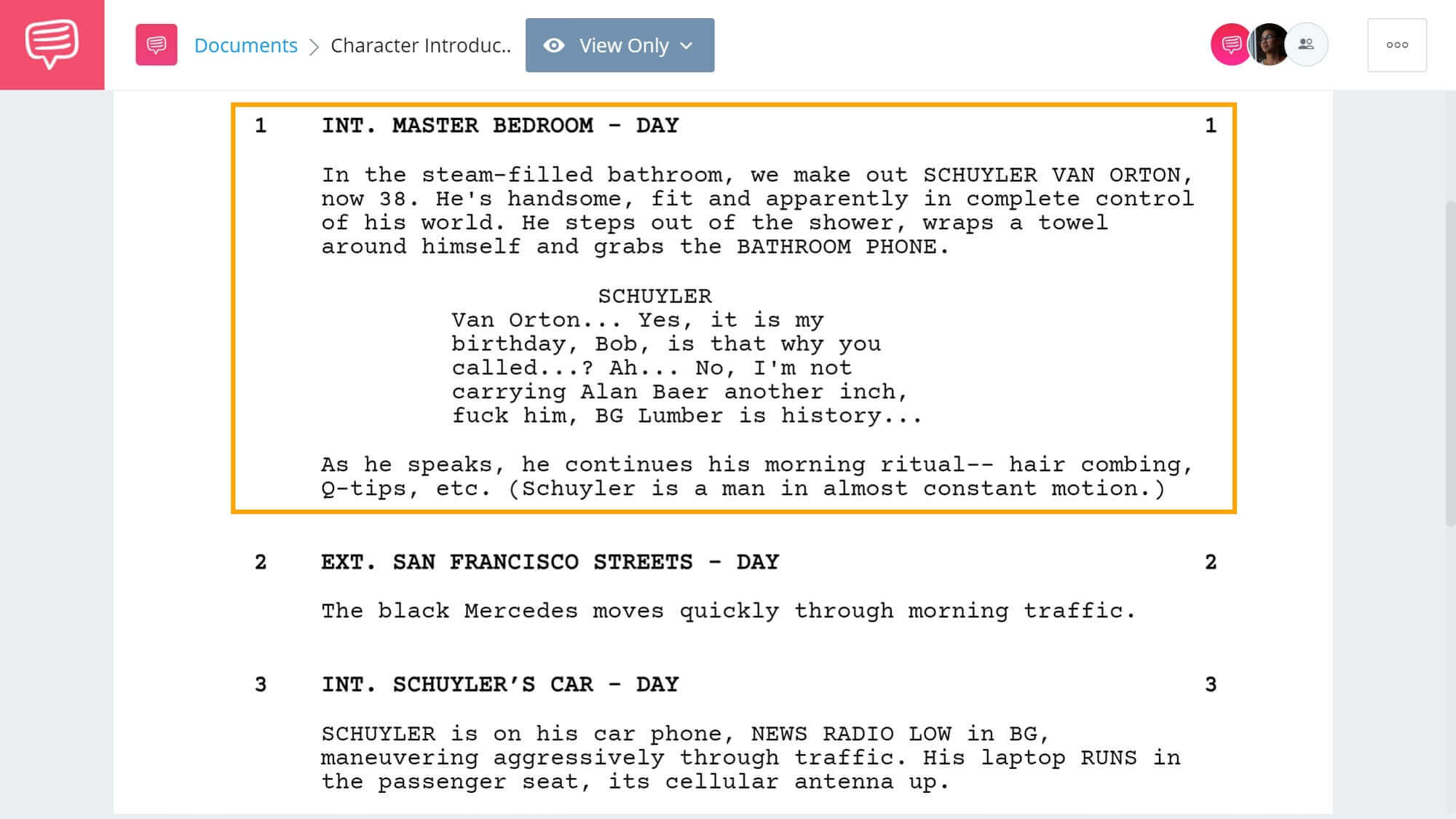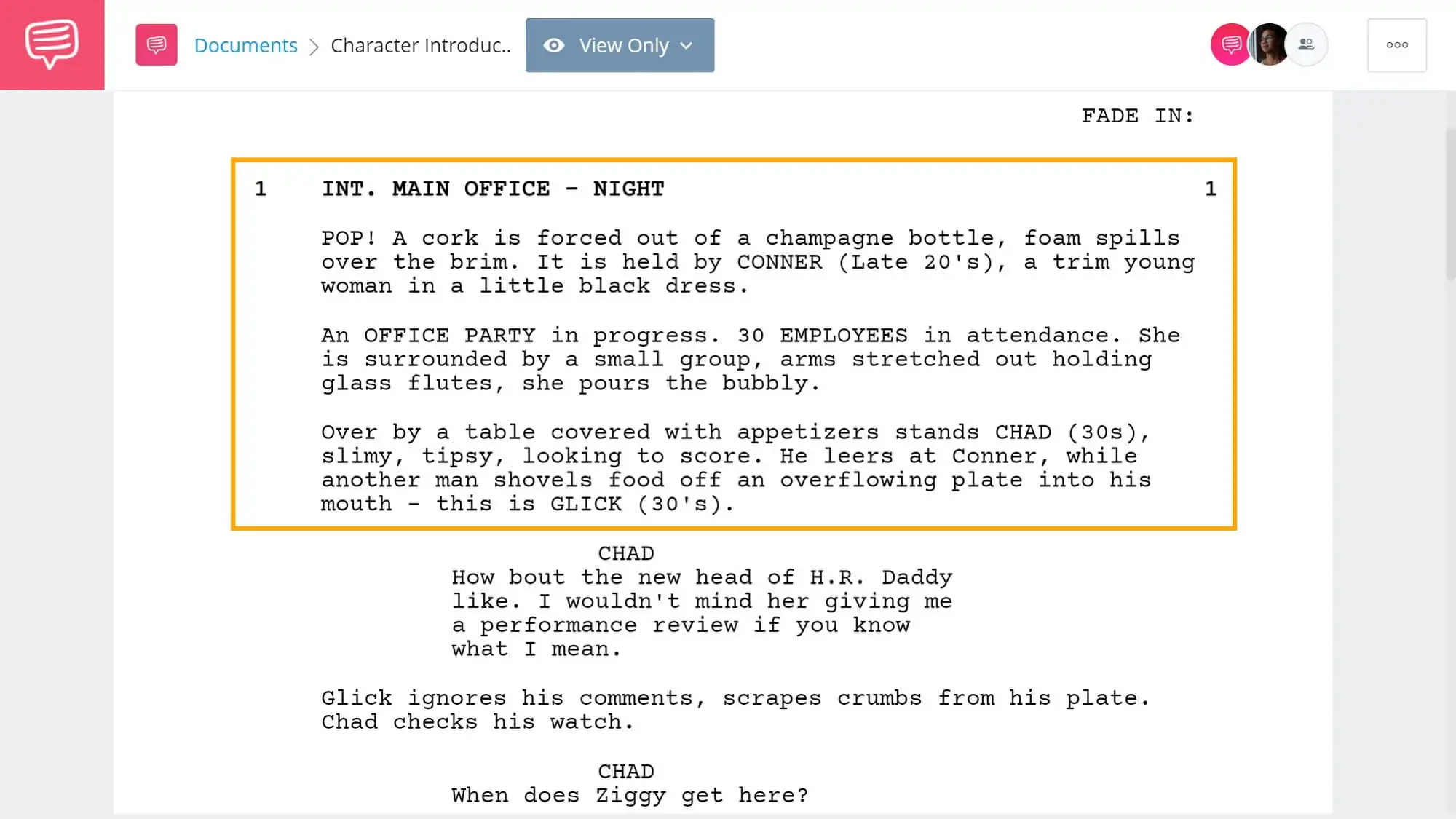Understanding how to introduce characters in a screenplay takes more than properly formatting character descriptions.
You want to consider when, where, and how each decision will play out in the mind of the reader and then how it will translate onscreen.
We’ll explian screenwriting character introductions so that you can build rich character descriptions that set a tone for your script.
Lezgo.
Watch: How to Introduce Characters in a Screenplay
How To Introduce A Character
How to introduce a character in a screenplay
Character introductions in screenplays require a bit of screenplay formatting, a bit of craft, a bit of art, and a bit of love. Introducing a character in a screenplay is one of the best opportunities for a screenwriter to set a tone with robust and clever character description… but there is something else you want.
An intelligent screenwriter will lace critical story elements into their character introductions to bolster the reader’s engagement.
Here’s the standard operating procedure for introducing characters:
NAME IN ALL CAPS (age range), some descriptions and traits.
You're not required to use parentheses or even add the age range if you think your character description and story will suffice, but the vast majority of character introductions will include an age range and traits.
You want your descriptions to be visual, but remember to take advantage of character introductions to add a bit of style and insight as well.
The way we are introduced to a character in a script says oodles.
Want to see some character description examples?
Related Posts
Character Description Examples
Examples of character descriptions in screenplays
Let’s look at a few character introductions from popular films.
Get Out
Click the character introduction example below to read the entire scene:Character Introduction for Get Out
The main thing that stands out to me in these character introductions is the subtext behind each detail and action.
Each act as a statement, either about the motivations of the character, or a form of macro social commentary.
Inception
Click the character introduction example below to read the entire scene:Character Introduction for Inception
Each of these character introductions is pretty brief. We get a specific age for Cobb, while Saito’s age is vague.
Sometimes a screenwriter or director is more concerned with the actions and the plot, and they want the rhythm and intention of each line to be the focus… not character traits.
The Game
Click the character introduction example below to read the entire scene:You’ll notice that there are a few non-visual character descriptions in this character introduction that, in other sections of the screenplay, would be considered a screenwriting faux pas.
We can’t see certain concepts like ‘being in control of his world’ or even ‘a man in almost constant motion’, but they build some character.
For the description, you can include physical character descriptions, emotional descriptions, or some concept that provides context.
‘A man who has written more books than he’s read.’
Often, screenwriters will begin with the character description before the formal introduction, and this can be done either with dialogue from a previous scene, or through action in the lines running up to the intro.
An urbane man in his late 30’s enters the room. Tailored Tom Ford suit, a cigarette hangs from his lips. He adjusts his cufflink, surveys the casino floor…
...meet JAMES BOND
The description above includes an age range, physical description, costume, hair & makeup, light psychology, and narrative implications.
This is all laid out in a matter of two action lines, which means it will be robust, fun to read, and touch on important production details.
Related Posts
How to Describe Characters in a Screenplay
How to introduce multiple characters in a single scene
When you have a half dozen or so characters in a script who each share a similar level of importance to the story, you may refer to your characters as ensemble.
In situations like this, you can either set up a bunch of individual scenes, or you can introduce your characters in some form of a group setting.
Here’s an example of introducing an ensemble cast in a single scene:
I set out to assign a unique deadly sin to each character, and then define them by their actions and dialogue in a way that expressed their flaw.
- Lustful Chad leers at a young woman in a dress.
- Gluttonous Glick shovels food in his face.
- Slothful Kai obliviously procrastinates and pouts.
- Greedy Conner cheats by adding extra-raffle tickets.
- Wrathful Wanda threatens revenge against he co-worker
- Envious Eva pines and grumbles about her circumstance.
- Prideful Ziggy turns the office into a personal shrine.
If I were to simply list flaws in each of the character descriptions without providing some representative action and dialogue, how would the viewer know these character flaws existed in the first place?
Character Description in Screenplays
What about when your character has an extra identity or an alias?
Sometime screenwriters might choose to introduce a character as something like ANGRY MAN or MASKED VIGILANTE before revealing the true identity of the character to the reader.
In this situation, how does a screenwriter keep things clear?
You can use an screenwriting extension.
Here’s an example below:
It’s acceptable to place an alias in an extension for some brief clarity. This won’t bog the reader down by forcing them to read extra lines of action that laboriously spell out each time something like this occurs.
This is helpful in situations where a character disguises themselves throughout the story, whether it be multiple costumes or just one.
Script Character Description
When and where do you want to introduce characters in a screenplay?
There are some pretty common sense guidelines for when and where you should introduce the main characters in your screenplay.
WHEN SHOULD I INTRODUCE MY CHARACTER
Some will say the first character we meet should be your main character, but in some cases, you’re actually better off building some anticipation.
In the screenplay for Inglourious Basterds, we meet a French farmer and one of his daughters before we meet Col. Hans Landa.
It not until the end of the scene that we meet Shosanna, and only after it ends do we get to meet Lt. Aldo Raines. Each and every one of these character introductions worked really well despite being spaced out.
Now… if you’re waiting until page 25 to introduce the main character in your script, you’ve waited far too long. At least do it in the first 10 pages.
WHERE SHOULD I INTRODUCE MY CHARACTER
If you’ve done the prep work with regard to theme, plot, setting, and character development, it will make your character descriptions easier.
My advice is to use a setting that perfectly encapsulates your character.
If your character is Neo…
Introduce him alone in his computer dungeon of an apartment.
If your character is Indiana Jones…
Introduce him in the middle of a dangerous adventure.
Related Posts
UP NEXT
How to Become a Screenwriter
Now you understand how to write better character descriptions and introductions, make sure to take a look at How to Become a Paid Screenwriter. Our post is full of helpful tips and lessons you can apply to your own journey toward a professional screenwriting career.
